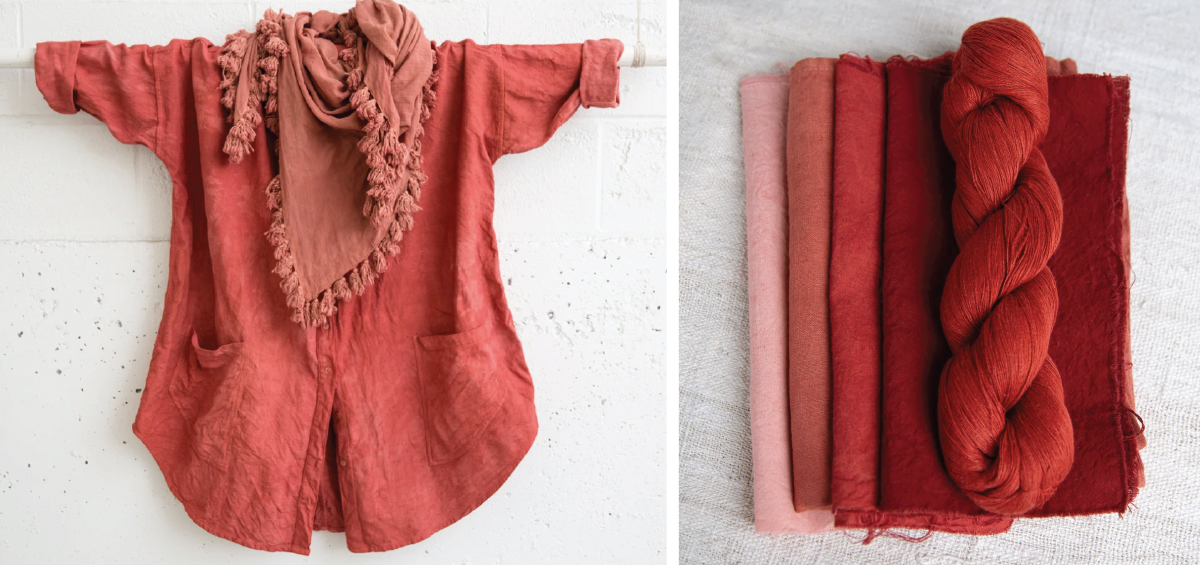Maiwa's Natural Dyes – Where Do They Come From?
Madder Crop
Maiwa’s Natural Dyes – Where do they come from?
We use natural dyes extensively in our own production. This is the best way to know how a dye behaves and see the changes that happen from harvest to harvest. Because we use the same dyes we sell, we can ensure that each package contains the best available dyestuff.
Our policy is to acquire the raw dyestuff in its most elemental form (wood chips, roots, petals, dried leaves) so that we can ensure purity. We then process it into the form (usually a powder) that works best for the artisan dyer. Some dyes are always extracts: lac, indigo and cutch for example. In order to provide natural dyes in a more versatile form for certain processes, we partner with trusted companies in Europe to extract the dye component from raw materials.
Maiwa sells cultivated dyes. We work directly with farmers where we can visit the farm and observe the conditions of cultivation. Our indigo is from South India, and is certified organic. We also sell the leaves in powder form for use as a hair dye. Pomegranate rinds (high in tannins) are collected all over India. The dried skins are a by-product of fruit consumption. Many natural dye plants are considered weeds – they have great vitality and do not require pesticides. Indigo, for example is weeded by cows and goats (who eat the weeds but not the indigo). Maiwa also encourages small scale, non-gmo, organic farming methods.

We don’t wild harvest or trade with wild harvesters. In other countries wild harvesting is difficult to monitor and can have adverse effects on traditional forest-dwelling populations. We encourage the public to exercise caution if wild-harvesting and to be aware of local ecology. Sensitivity is especially important with lichens. Windfall is often preferable to harvest, but windfall also has its own ecosystem – a variety of insects, birds, animals, and other plants depend on it. Only taking one part in ten is a good rule to follow.
Maiwa maintains an extensive dye-testing practice in addition to using its own dyes in production. We routinely evaluate natural dyes on a variety of fibre types with a range of mordanting procedures. It’s fun work – because we love natural dyes.
Fields of Indigo
THE ULTIMATE NATURAL DYE KIT
The ultimate kit is a dye studio in a box. It contains everything you need to dive deep into the world of natural colour. From the initial scour to the final rinse — this kit has you covered. Priced at a discount to get you started.
ADDITIVES
The dyeing process usually requires additives. Additives are used to mordant the colour and shift it in interesting ways. Additives are also used to modify dyes for processes such as silkscreening and block printing. You will also find the additives needed for discharge techniques, scouring, after washing, and neutralizing. Descriptions are found with each additive. For more detailed information, see our data sheets.
INSTRUCTIONS
We believe in sharing information.Find everything you need to get started in our comprehensive guide to natural dyes — Free online!

This journal has been an idea of ours for a long time. It is a little like a combination of a travel journal and a natural dye journal. It is the journal we have always wanted!
To our U.S. customers – don't forget that the exchange rate works in your favour, it's like an extra discount.





























0 comments
We moderate comments to keep posts on-topic, avoid spam, and inappropriate language. Comments should appear within 24 hours.